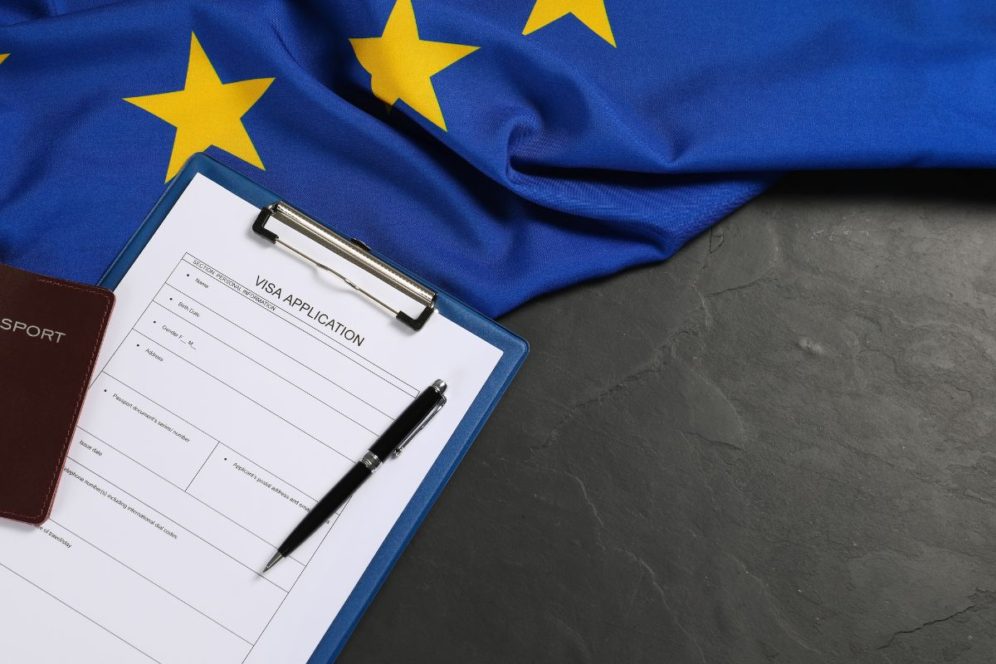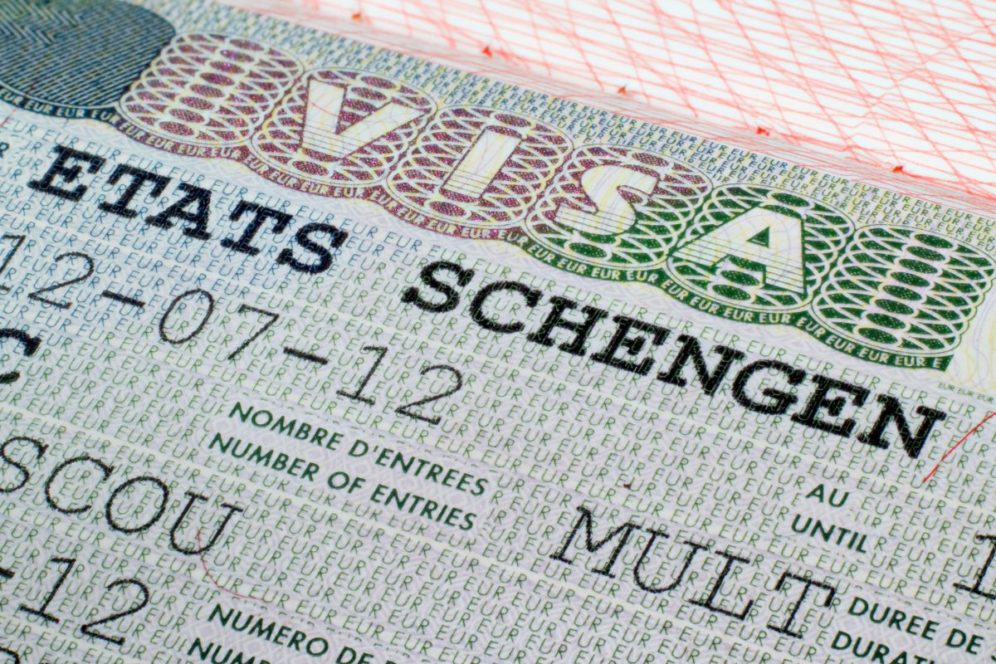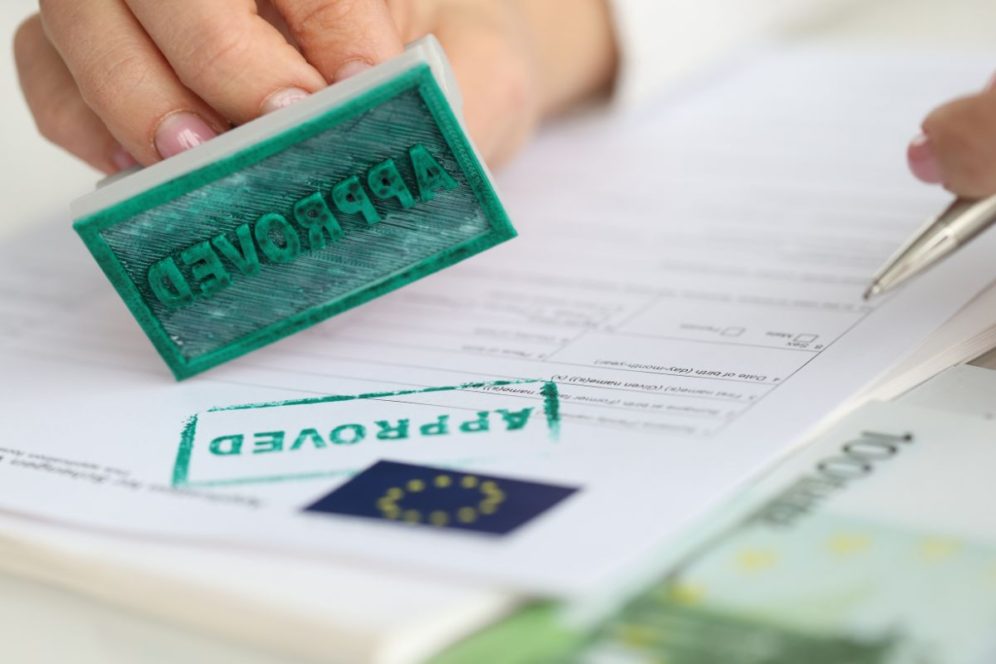Applying for a Schengen Visa comes with a lot of questions. If you don’t know how to approach, or are having trouble with approval, follow this guide.

Basics of the Schengen Visa: Types and Requirements
The Schengen Area is a conglomerate of 29 countries in Europe. It allows free traveling across the internal borders of these countries. However, to enter the Schengen Area, citizens of more than 120 countries need to apply for a visa first. The list of such countries is listed on the official European Union website under “Visa Policy”. There’s also a list of countries that don’t require a visa to enter the Schengen Area.
Foreigners with Schengen Visas can spend up to 90 consecutive days in the Schengen Area. Visas vary in types and purposes, such as tourism, business, and family visits.
Validity periods of the Schengen Visa can last from several weeks to five years. An embassy where an applicant receives their visa decides which validity to issue them, after reviewing their application.
Types of the Schengen Visa are as follows:
- Single-entry. Allows one 90-day entry within the validity period.
- Double-entry. Allows two entries within the validity period. Each entry must be no more than 90 days within a 180-day period.
- Multiple-entry. Allows multiple entries within the validity period. Each entry must be no more than 90 days within a 180-day period.
Example. A foreigner is issued a single-entry Schengen visa for one year. This means they can travel to the Schengen Area only once and spend no more than 90 days there. If they want to return, they must apply for a new visa. That visa can have extended validity and allow more entries.
Schengen Visa requirements include submitting an application form, a valid passport, photographs, a travel itinerary, proof of financial means, and travel insurance. Processing times for Schengen Visa issuance usually take at least 15 days. This may extend to 30—60 days in peak periods or for additional scrutiny.
Tips on Avoiding Common Pitfalls in Schengen Visa Applications
1. Prepare in advance as many documents as possible. For example, the passport must have at least two blank pages, and be valid 3 months after you intend to leave the Schengen Area. Photographs must be taken within the last 6 months and not be altered. The passports and birth certificates of your minor children, if applicable, should also be in order. The sooner you discover any issues with the documents, the more time you will have to fix them.
2. Don’t skip on sponsor/invitation letters. If you are planning to spend even one night at a Schengen resident’s place, ask them for an invitation letter with an ID copy. Other requirements for a sponsor or invitation letters depend on the Schengen visa type and your purpose of visit. Refer to a relevant consulate for the specific requirements.

3. Check the minimum bank balance requirement of the destination country. Different Schengen countries have different means of subsistence rules. For example, Austria has none, while in Denmark you must prove you can spend at least €68 a day throughout your trip. Generally, it is recommended to budget at least €100 a day regardless of the destination country.
4. Write a very detailed travel itinerary with extensive proof for each step. Make sure to include the following:
- flight or train bookings — including ones for leaving the primary Schengen country;
- accommodation bookings for each destination;
- planned activities, as well as venues or sights you’re planning to visit;
- budgeting for your day-by-day plans, in line with your proof of financial means;
Don’t forget that a cover letter is needed even if you are applying for a transit visa.
5. Consider Schengen Visa rejection statistics of your native country and the country of appliance. The data is available on the EU Commission website. Below are the Top 3s for 2023.
Rejection rates by nationality:
- Guinea — 51.1%
- Nigeria — 48.5%
- Senegal — 44.5%
Rejection rates by Schengen country:
- France — 26.7%
- Germany — 15.3%
- Spain — 12.7%
If your nationality has a high rejection rate, collect as many documents as possible to strengthen the application, and, if possible, apply via a consulate of a Schengen country with a low rejection rate. Also consider consulting a legal expert.
6. Thoroughly fill out the application and re-check it for errors. An incomplete application with incorrect or inconsistent information leads to rejection. Make sure all details match across documents.

Troubleshooting the Schengen Visa Application
Rejected application. If rejected, you can appeal. The rejection letter will provide reasons and appeal instructions. Address the issues and submit a well-prepared appeal, possibly with the assistance of a legal expert.
Application processing delays. Delays can occur due to incomplete applications or peak travel seasons. Apply well in advance, ideally 3 months before your planned trip, but no earlier than 6 months.
Missing documents. Contact the embassy or consulate immediately if you missed submitting a document. Some may allow submission after the initial application.
Changing travel plans. Inform the embassy or consulate if your travel plans change significantly. You may need to update your application.

Leave a Reply